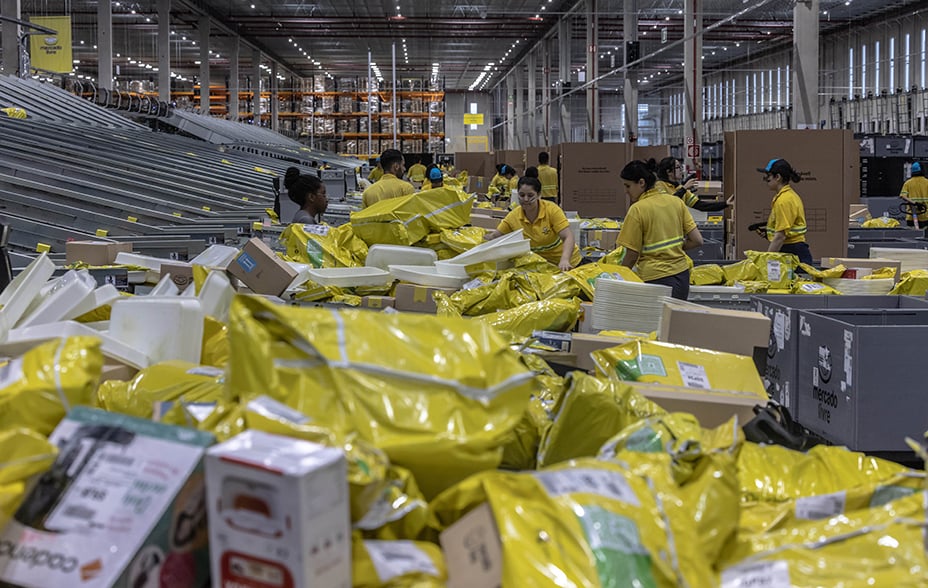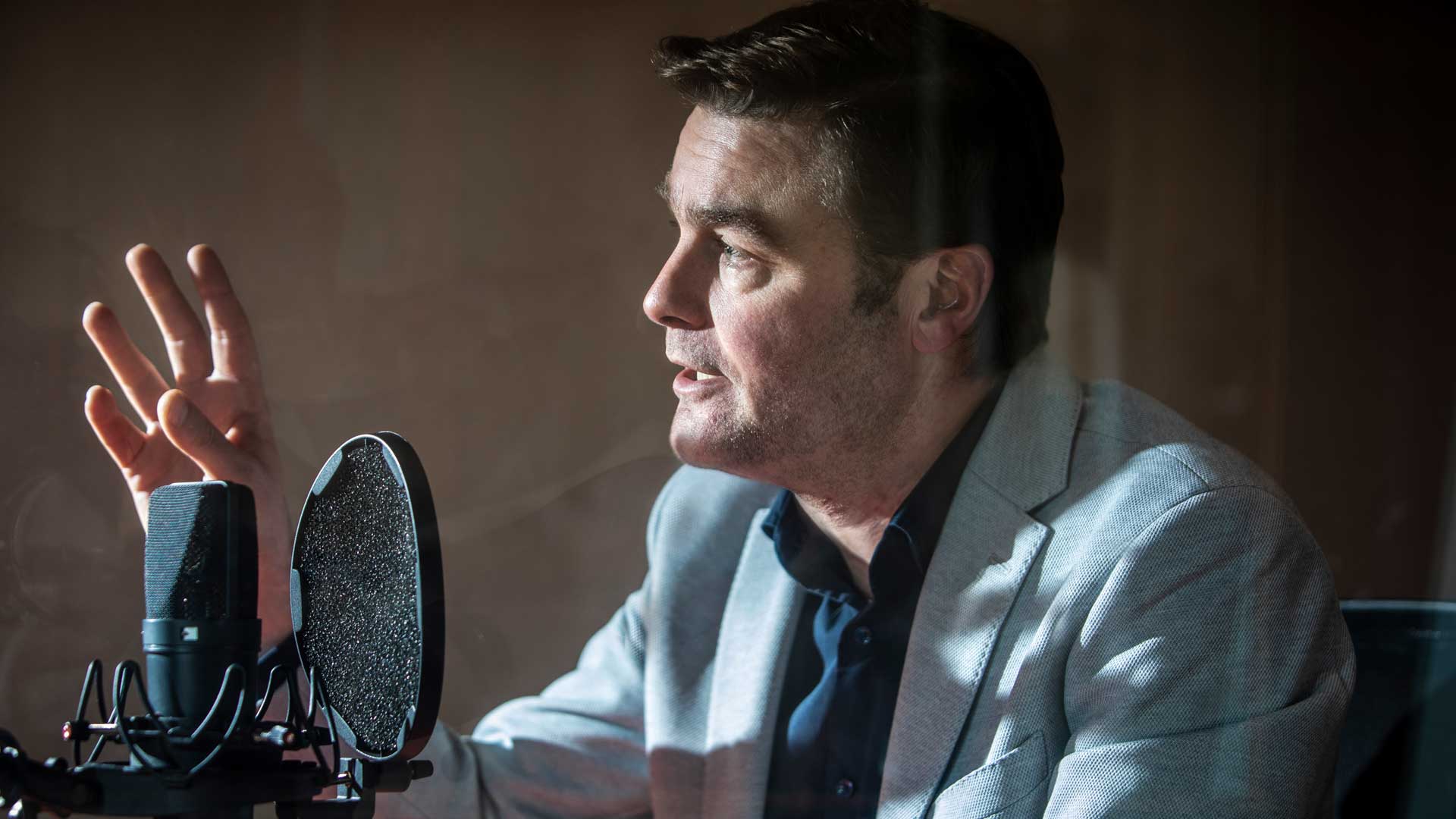
All investment strategies have the potential for profit and loss, your or your clients’ capital may be at risk.
As a child in the 1980s, my favourite TV program was called Tomorrow’s World (well, first equal with The A-Team). Tomorrow’s World aired on BBC One for almost 30 years before being axed for declining viewership in 2003.
I loved it. We got this glimpse of possible futures through live demonstrations (which occasionally went amusingly awry) of new gadgets which let your imagination run. The show got a lot of things wrong, of course, but a few very right – like heralding the mobile phone in 1979, and the home computer in 1967.
But I always had a bone to pick with them, because we were promised robots and they never appeared. The disappointment was compounded by my avid reading of Isaac Asimov’s Robot novels and his three laws of robotics, which I can still recite by heart:
- A robot may not injure a human being, or through inaction, allow a human to come to harm
- A robot must obey orders given to it by human beings, except where such orders would conflict with the First Law
- A robot must protect its own existence as long as such protection does not conflict with the First or Second Laws.
Alas, R Daneel Olivaw, C-3PO, KITT in Knight Rider, and other famous humanoid creations remained, seemingly forever, a far-off fiction.
Being involved in LTGG is a bit like being an erstwhile presenter on Tomorrow’s World. You’re having a go at predicting the future and occasionally spotting something relatively unknown that goes on to become an integral part of our lives, making multiples of the initial investment for clients as a result.
When they assess 2023, most investors will not have Tomorrow’s World or Isaac Asimov’s novels in their minds. They may well see the year as containing a momentous inflection point, but in macro terms. After all, inflation obediently descended towards Earth like a used rocket and interest rates have probably reached their peak. In the meantime, the world economy may continue to grow at 2.5 per cent or more. This – now – Is a comfortable combination for growth investors, but one that the market considered highly unlikely until very recently. Thus, the market’s prevailing narrative backdrop is swinging from fear-of-further-rises and stay-away-from-long-duration-growth, to anticipation that the next move might be down… so, remind me about some of these growth stories again?
We’ll take it, as such a shift in frame of mind no doubt plays into LTGG’s hands and has already heralded a rebound in performance after the 9-month cataclysm that began in the fourth quarter of 2021. But “macro inflection” – felicitous as it is – is not how we would define the year. For us, 2023 was the year that Tomorrow’s World became Today; it was the year the transformational growth stories resumed their conquest; and it was the year our long-promised robots finally arrived.
Style check
We’ll get back to the future (sans DeLorean), but it is worth pausing first for a “style check”. When a manager’s stated style (in our case, optimistically owning the highest growth companies with the furthest away payoffs) has experienced pariah status, there is a danger that the beleaguered zealot says “Enough!” and steers towards the middle ground. This is as understandable as it is undesirable.
We’d like to reassure you on two fronts: that we have kept our mojo as the most optimistic long-term growth investors you have, but, not so arrogant as to dismiss 2021/22 as pure aberration, we’ve made a couple of refinements to our process along the way.
A reminder of the refinements we have made
First, we’ve instituted an R&D bucket for holdings that are early-stage businesses. Our rule is that we can’t add to R&D holdings until they have passed certain operational milestones (usually on the way to profitability or being free cash flow positive) and therefore emerge from the R&D bucket. This is to prevent us from adding to such holdings merely on share price weakness, which we did with the mini debacles of Beyond Meat, Peloton, and Carvana when the businesses had not sufficiently de-risked. We have set a limit of 10 per cent of the portfolio to be in R&D holdings at a given time (it’s currently around 6 per cent).
Second, we’ve accommodated an increased awareness of valuation extremes. This doesn’t mean we are now only looking for “quality growth” companies on a low double-digit PE. But it does mean we assess a quarterly valuation “heat map” from our Risk team, and it does mean a bit more calibration of how bullish we are required to be to see sufficient upside in our holdings (see below – there were several reductions to familiar holdings on this basis in recent months). In 2023 we wrote on, discussed, and very much liked Brazilian financial disruptor Nubank. When we first looked at Nubank it was on 3.5x book value. By the time of the final stock discussion, it was up to 4.4x. We decided that was simply too much for an EM bank, but we resolved to look out for a more attractive entry point. A couple of years ago we’d have bought it in at 4.4x and kept going if it went up.
Third, we sharpened up our thematic risk assessment Euler diagram. Instead of simply having themes like “Ecommerce” or “Energy Transition”, we’ve specified the contentions (currently 14 in all) that underpin each group of holdings, for example, “The demand for high-end chips will continue to grow” = ASML, Nvidia, AMD. And we can keep revisiting them to see if we still believe in the contention and why. The nuance puts us on the spot a bit more lest we become, thematically, too comfortably entrenched.

© TEDALJIBE/AFP/GettyImages.
Mojo intact
The portfolio activity in the last year should leave no one in doubt as to the continuing go-for-it optimism and high-growth personality of LTGG. We sold or reduced several older holdings that now need a second or third act to keep going, and put money into new, very exciting ones.
As previously with Tesla and Amazon, we recycled alpha out of NVIDIA when it crossed the 10 per cent max holding size to buy new holdings (we first purchased NVIDIA in 2016 and continue to be very bullish on it, but it makes sense to recycle from a $1tn market cap company into some smaller ones, all with “house” money). We also took more out of Tesla a couple of times, which is now a c.4 per cent holding. In total over the years, we put c.6 per cent into Tesla (last addition in 2016) and have taken more than 20 per cent out of it. It still has significant upside, but probably not a multi-multi-bagger from here without major success from Full Self-Driving.
We also sold out of Illumina and Salesforce entirely. We’d held both for more than a decade, but there are no sacred cows. At Illumina, a combination of management missteps (multiple Grail fiascos and no accepted accountability from them), underwhelming growth and increased competition made us sell entirely. In the case of Salesforce, it was mainly a case of growth staleness making sufficient upside too hard work from the current valuation.
From these proceeds, we added to younger existing holdings or entirely new stocks that are all high growth and early in their development. For existing holdings, we topped up SEA, the Southeast Asian online retail and gaming company, and Adyen, the beaten-up payments solution provider. Both these companies had had very weak share prices but – crucially – they had also made operational progress. It had not escaped their notice that unprofitable or Free Cash Flow-negative businesses were being particularly singled out for drubbings. They both initiated self-help, alongside a couple more of our holdings like Shopify and Coupang, and all quickly ushered the financial metrics in the right direction – a Smithsonian adaptation of the sort we were lauding in our last report. But all these companies are fast growing and very exciting – indeed, we think Adyen may have the biggest payoff of any stock in the portfolio.


So, at the portfolio level, our portion of companies that were either unprofitable or free cash flow negative fell from high teens to 8 per cent of the portfolio in the last 6 months. We are confident they are still investing for growth, but also striking a pragmatic tone. And yet at the same time, by recycling alpha from a few giants, we tilted the portfolio towards some younger holdings that have a long runway of high growth ahead of them before even needing to consider a second act.
Aye robot
The new buys of the last 12 months – Joby Aviation, Datadog, Enphase, Samsara, Mercado Libre – are exciting, high-growth companies at an early stage in their ascent. They won’t all work, but if a couple of them prove to be Tomorrow’s World hits, then the returns to shareholders will be huge.


Having inherited a wholesale business from his parents, Richie Cohen got fed up with the perennial losses and set about designing warehouse automation to save costs. Twenty years later Symbotic (an abbreviation of “Symphony of Robots”) offers a system that would make Isaac Asimov smile. A typical large warehouse goes from needing 100 humans to 10, and the robots do the rest. Walmart can’t get enough of Symbotic’s systems – the next three years of installations are fully booked out by them alone. One key for Symbotic to grow really fast is reducing the system installation time (it was 30 months, now 22 months, and they are aiming for 6 months). Research on this company continues.
In the meantime, Amazon increased the number of robots in their own distribution centres by 45 per cent year-on-year, to 750,000. We looked at Keyence too (partly per se, partly as a competitor to Symbotic), and we are very interested in Cognex, which is a fast-advancing machine vision company: 30 million people worldwide are employed in visual inspection. And Samsara’s (purchased in April 2023) clever dashboards take fleets of dumb vehicles and smartens them up. The robots are finally coming.
Our client conference at Gleneagles in September 2024 will have a Renaissance theme: there are a number of parallels between today and Florence in the late 16th Century. Joby Aviation’s silent electric helicopters may not be four centuries ahead of their time like Leonardo’s famous sketches, but they are still straight out of the opening scene of Blade Runner. And one day they’ll be self-piloted too.
But first, there are Federal Aviation Authority hurdles to overcome (Joby has a lead on this vs competitors) for the human-piloted version. The initial revenues will come from deliveries to the US military in 2025, after which the commercial rollout should begin with JFK to Manhattan in 6 minutes for Delta Airlines, followed by greater Los Angeles.
A full precis of LTGG’s plays on AI requires a paper in itself, but from NVIDIA’s high-end chip monopoly to Tesla’s Full Self-Driving and Robotaxis, to AMD, AWS, Cloudflare, Datadog and ASML, we think at least one-quarter of the LTGG portfolio is strongly linked to this theme. Helpful, then, that the Baillie Gifford investor rotating into the LTGG team later in January1 spent the last six years quietly running our own AI fund experiment. We are convinced that we are witnessing a rare and momentous “deep transition” for the world akin to the Industrial Revolution: society is at an early stage of digitisation and, as with the Renaissance, conflicts will arise (malevolent disinformation as our biggest threat aside from climate change?) This portfolio is clearly facing forward, and we will have more futuristic bets to come.

China
No market more embodies both the spirit of the future and a nagging sense of conflict than China. In September, at a renowned investor symposium in Wyoming, one of our LTGG portfolio managers witnessed a stunning moment of collective cognitive dissonance. In response to a “Who is bullish on China?” question, no participants answered affirmatively. Striking uniformity, perhaps, but not the punchline. In response to the follow-up – “Who can imagine a scenario where they would become bullish on China?” – still no one! Now, how can that be?
You don’t need much imagination to be more positive, especially given the fact that everyone else, at least in the US, is so negative. Surely there are a few contrarians out there? We have a sixth of the portfolio in Chinese companies today compared to almost a third at the peak, but the companies we own are a significant part of the portfolio and we see several reasons for enthusiasm. The first is… tea leaves and the reading thereof. Like it or not, this is a factor (and the fact such deciphering of signals is required, let’s be clear, is not a positive). But our sources, from company chairpersons, to academics, to politicians, to third-party research outfits and our own on-the-ground analysts, mostly see the direction of government moves in recent months as favourable. This would fit with the pattern we’ve seen before, namely of a severe government clampdown (on some aspect of free market capitalism), then a row-back when the adverse repercussions become apparent. In the private-public tug of war, 2024 onwards presents, in our view, as a steady state or better.
Second, and perhaps most importantly, the overall GDP growth in China (4 per cent or so from here? Still rather good for the world’s second-largest economy, surely?) does not matter much to the right growth stories. There are three areas of the Chinese economy with strong tailwinds for years to come: green energy and associated energy transition, semiconductors, and all things AI. If you add in domestic healthcare champions, then all our holdings are covered by a combination of secular and government-willed tailwinds.
And third – we permit you a wry smile at this coming from us – valuations for growth in Chinese companies are so low. The valuations per se (about 11x PE for the Chinese market, roughly half of the S&P) are not enough reason for us to invest – we need growth stories coming through too. But we have those growth stories regaining momentum (some of them never lost it) like Tencent, and even after a better period in share price terms, the likes of Tencent and Pinduoduo are on less than 20x near-term earnings while boasting strong growth, high profitability and war-chest balance sheets.
So, we have a very cheap market that everyone hates, a government leaning more favourably, an economy with clear areas of secular growth well above the already more than respectable 4 per cent GDP growth, in a country that produces 75 per cent of the world’s civilian drones, 63 per cent of the planet’s lithium batteries, 60 per cent of wind power equipment, 88 per cent of the world’s solar panels, publishes more science papers than any other country in the world, files more patents than any other country, outspends every country on R&D… and yet no investors can even imagine a scenario that would make them bullish? We beg to differ.
“Once you have tasted flight you will forever walk the earth with your eyes turned upwards”
Conclusion
For equity investors, the great misfortune of 2008’s Global Financial Crisis was not the huge drawdown of that annus horribilis in itself; it was the impact on investors’ mentality afterwards. A number of clients spent the years after 2008 preparing for 2008 (“we need more downside protection”), and they missed out on more than a decade of stellar returns from growth equities in an era of exhilarating transformations (from 30 September 2008 LTGG returned 20 per cent p.a. absolute and +10 per cent p.a. relative over the next 13 years).
Fast forward to today: could something similar happen again after the annus horribilis of 2022? Investment committees have been fretting over strategic asset allocation in a “high inflation and high interest rate environment”, just after the run-up in both. That uncomfortable ride is already in the past, and the pertinent question is about what happens from here.
“Once you have tasted flight”, Leonardo da Vinci said 400 years ago, “you will forever walk the earth with your eyes turned upwards”. So, our answer to what happens next is emphatic: the transformational growth stories of the next decade – robustly intact – will power on. They remain intact regardless of the macro backdrop, which is improving and proving the naysayers wrong anyway; they are undervalued, and they are about to return to investors’ front-of-mind. Front of mind since we are experiencing a deep transition somewhat akin to the Renaissance itself. Front of mind, because when we see a warehouse slickly run by robots, silent electric helicopters dropping athletes at the Paris Olympics, and Cybertrucks driving themselves, we realise that Tomorrow’s World is arriving today. And there are few portfolios more dialled into tomorrow than LTGG.
1. Official communication on this will be emailed to clients by the end of January 2024.
Important information and risk factors
Performance
| 2019 | 2020 | 2021 | 2022 | 2023 | |
| LTGG Composite | 34.13 | 102.05 | 2.43 | -46.42 | 37.25 |
| MSCI ACWI | 27.3 | 16.82 | 19.04 | -17.96 | 22.81 |
| 1 year | 5 years | 10 years | Since inception* | |
| LTGG Composite | 37.2 | 15.3 | 13.6 | 11.7 |
| MSCI ACWI | 22.8 | 12.3 | 8.5 | 8.0 |
Source: Baillie Gifford & Co and relevant underlying index provider(s). Net of fees returns have been calculated by reducing the gross return by the highest annual management fee for the composite. All investment strategies have the potential for profit and loss. Past performance is not a guide to future returns.
Risk factors
The views expressed should not be considered as advice or a recommendation to buy, sell or hold a particular investment. They reflect opinion and should not be taken as statements of fact nor should any reliance be placed on them when making investment decisions.
This communication was produced and approved in January 2024 and has not been updated subsequently. It represents views held at the time of writing and may not reflect current thinking.
Potential for profit and loss
All investment strategies have the potential for profit and loss, your or your clients’ capital may be at risk. Past performance is not a guide to future returns.
This communication contains information on investments which does not constitute independent research. Accordingly, it is not subject to the protections afforded to independent research, but is classified as advertising under Art 68 of the Financial Services Act (‘FinSA’) and Baillie Gifford and its staff may have dealt in the investments concerned.
All information is sourced from Baillie Gifford & Co and is current unless otherwise stated.
The images used in this communication are for illustrative purposes only.
Important information
Baillie Gifford & Co and Baillie Gifford & Co Limited are authorised and regulated by the Financial Conduct Authority (FCA). Baillie Gifford & Co Limited is an Authorised Corporate Director of OEICs.
Baillie Gifford Overseas Limited provides investment management and advisory services to non-UK Professional/Institutional clients only. Baillie Gifford Overseas Limited is wholly owned by Baillie Gifford & Co. Baillie Gifford & Co and Baillie Gifford Overseas Limited are authorised and regulated by the FCA in the UK.
Persons resident or domiciled outside the UK should consult with their professional advisers as to whether they require any governmental or other consents in order to enable them to invest, and with their tax advisers for advice relevant to their own particular circumstances.
Financial intermediaries
This communication is suitable for use of financial intermediaries. Financial intermediaries are solely responsible for any further distribution and Baillie Gifford takes no responsibility for the reliance on this document by any other person who did not receive this document directly from Baillie Gifford.
Europe
Baillie Gifford Investment Management (Europe) Limited provides investment management and advisory services to European (excluding UK) clients. It was incorporated in Ireland in May 2018. Baillie Gifford Investment Management (Europe) Limited is authorised by the Central Bank of Ireland as an AIFM under the AIFM Regulations and as a UCITS management company under the UCITS Regulation. Baillie Gifford Investment Management (Europe) Limited is also authorised in accordance with Regulation 7 of the AIFM Regulations, to provide management of portfolios of investments, including Individual Portfolio Management (‘IPM’) and Non-Core Services. Baillie Gifford Investment Management (Europe) Limited has been appointed as UCITS management company to the following UCITS umbrella company; Baillie Gifford Worldwide Funds plc. Through passporting it has established Baillie Gifford Investment Management (Europe) Limited (Frankfurt Branch) to market its investment management and advisory services and distribute Baillie Gifford Worldwide Funds plc in Germany. Similarly, it has established Baillie Gifford Investment Management (Europe) Limited (Amsterdam Branch) to market its investment management and advisory services and distribute Baillie Gifford Worldwide Funds plc in The Netherlands. Baillie Gifford Investment Management (Europe) Limited also has a representative office in Zurich, Switzerland pursuant to Art. 58 of the Federal Act on Financial Institutions (“FinIA”). The representative office is authorised by the Swiss Financial Market Supervisory Authority (FINMA). The representative office does not constitute a branch and therefore does not have authority to commit Baillie Gifford Investment Management (Europe) Limited. Baillie Gifford Investment Management (Europe) Limited is a wholly owned subsidiary of Baillie Gifford Overseas Limited, which is wholly owned by Baillie Gifford & Co. Baillie Gifford Overseas Limited and Baillie Gifford & Co are authorised and regulated in the UK by the Financial Conduct Authority.
Hong Kong
Baillie Gifford Asia (Hong Kong) Limited 柏基亞洲(香港)有限公司 is wholly owned by Baillie Gifford Overseas Limited and holds a Type 1 and a Type 2 license from the Securities & Futures Commission of Hong Kong to market and distribute Baillie Gifford’s range of collective investment schemes to professional investors in Hong Kong. Baillie Gifford Asia (Hong Kong) Limited 柏基亞洲(香港)有限公司 can be contacted at Suites 2713–2715, Two International Finance Centre, 8 Finance Street, Central, Hong Kong. Telephone +852 3756 5700.
South Korea
Baillie Gifford Overseas Limited is licensed with the Financial Services Commission in South Korea as a cross border Discretionary Investment Manager and Non-discretionary Investment Adviser.
Japan
Mitsubishi UFJ Baillie Gifford Asset Management Limited (‘MUBGAM’) is a joint venture company between Mitsubishi UFJ Trust & Banking Corporation and Baillie Gifford Overseas Limited. MUBGAM is authorised and regulated by the Financial Conduct Authority.
Australia
Baillie Gifford Overseas Limited (ARBN 118 567 178) is registered as a foreign company under the Corporations Act 2001 (Cth) and holds Foreign Australian Financial Services Licence No 528911. This material is provided to you on the basis that you are a “wholesale client” within the meaning of section 761G of the Corporations Act 2001 (Cth) (“Corporations Act”). Please advise Baillie Gifford Overseas Limited immediately if you are not a wholesale client. In no circumstances may this material be made available to a “retail client” within the meaning of section 761G of the Corporations Act.
This material contains general information only. It does not take into account any person’s objectives, financial situation or needs.
South Africa
Baillie Gifford Overseas Limited is registered as a Foreign Financial Services Provider with the Financial Sector Conduct Authority in South Africa.
North America
Baillie Gifford International LLC is wholly owned by Baillie Gifford Overseas Limited; it was formed in Delaware in 2005 and is registered with the SEC. It is the legal entity through which Baillie Gifford Overseas Limited provides client service and marketing functions in North America. Baillie Gifford Overseas Limited is registered with the SEC in the United States of America.
The Manager is not resident in Canada, its head office and principal place of business is in Edinburgh, Scotland. Baillie Gifford Overseas Limited is regulated in Canada as a portfolio manager and exempt market dealer with the Ontario Securities Commission (‘OSC’). Its portfolio manager licence is currently passported into Alberta, Quebec, Saskatchewan, Manitoba and Newfoundland & Labrador whereas the exempt market dealer licence is passported across all Canadian provinces and territories. Baillie Gifford International LLC is regulated by the OSC as an exempt market and its licence is passported across all Canadian provinces and territories. Baillie Gifford Investment Management (Europe) Limited (‘BGE’) relies on the International Investment Fund Manager Exemption in the provinces of Ontario and Quebec.
Israel
Baillie Gifford Overseas Limited is not licensed under Israel’s Regulation of Investment Advising, Investment Marketing and Portfolio Management Law, 5755–1995 (the Advice Law) and does not carry insurance pursuant to the Advice Law. This material is only intended for those categories of Israeli residents who are qualified clients listed on the First Addendum to the Advice Law.
Ref: 86011 10043519







